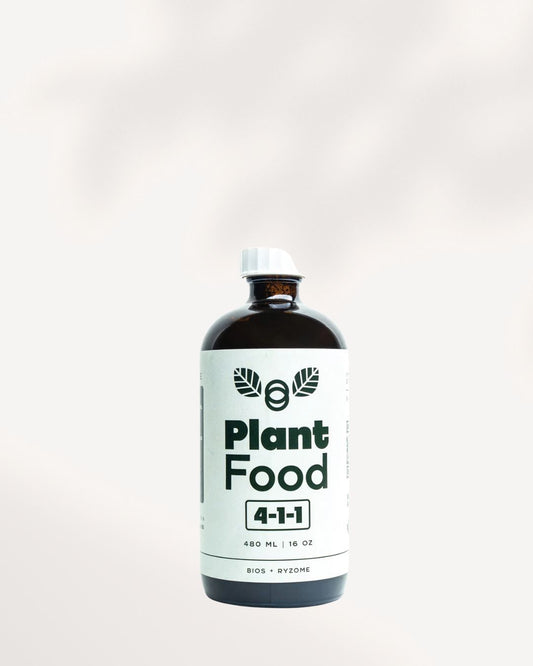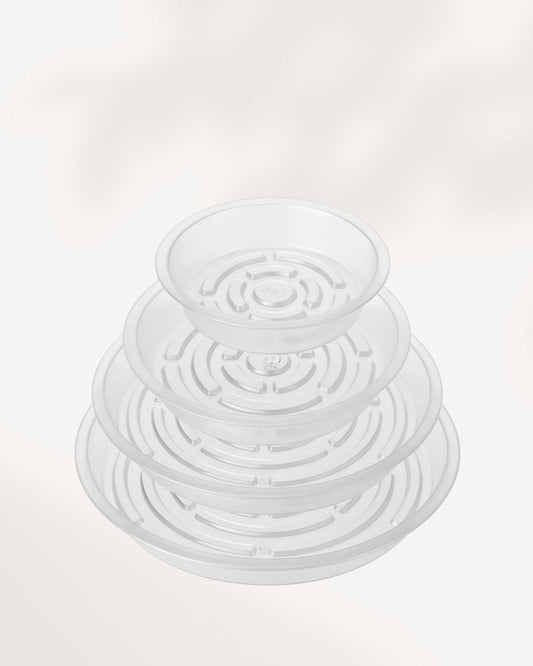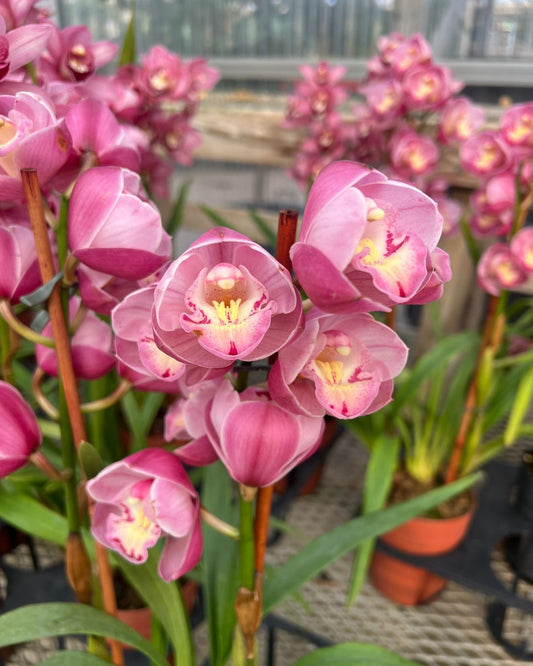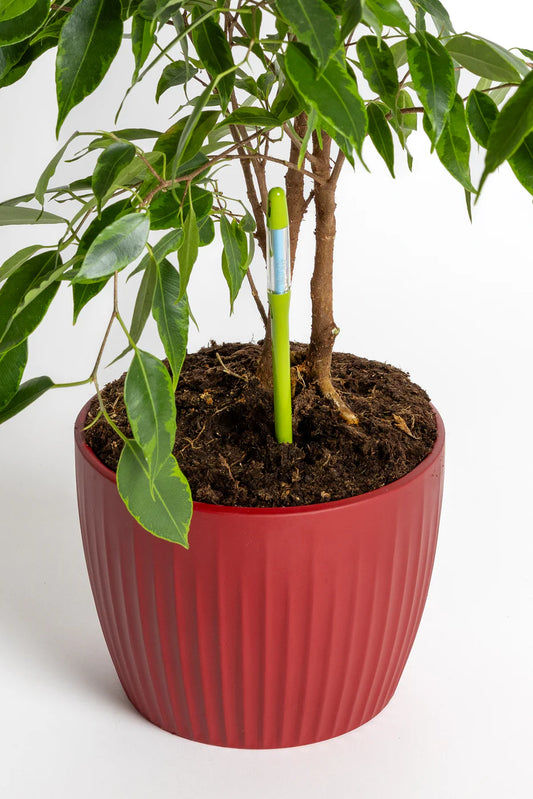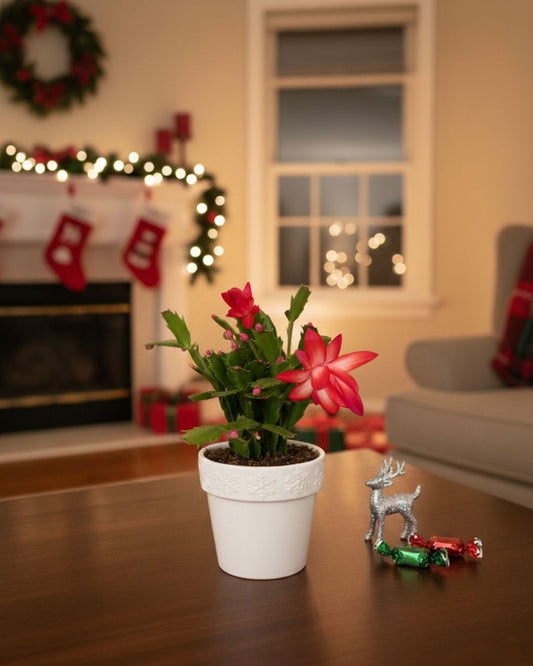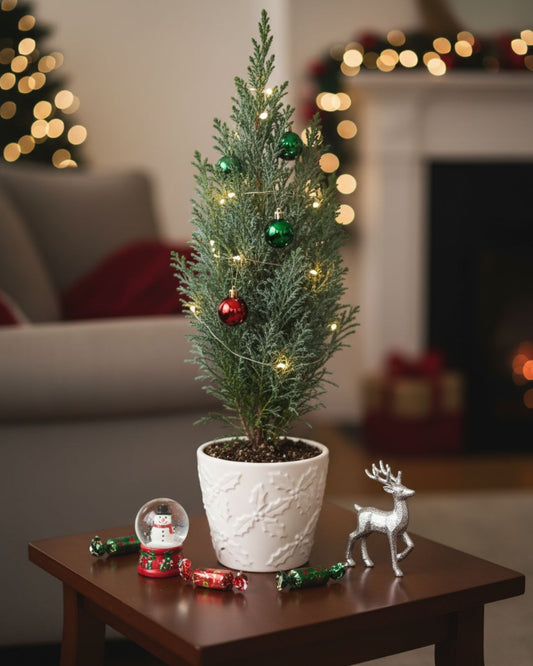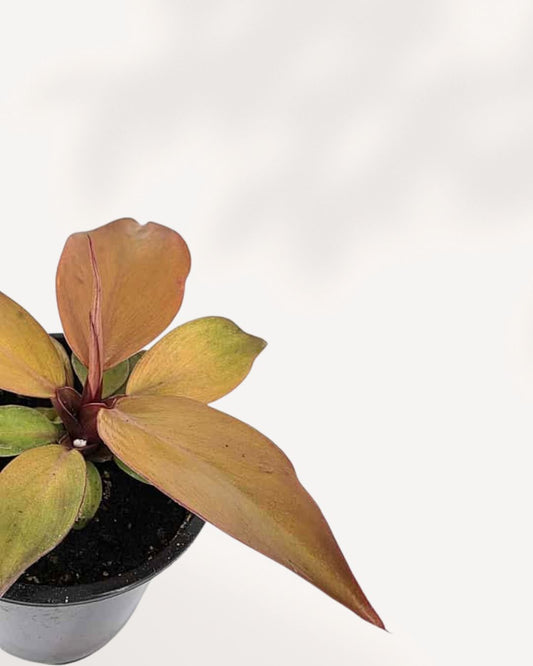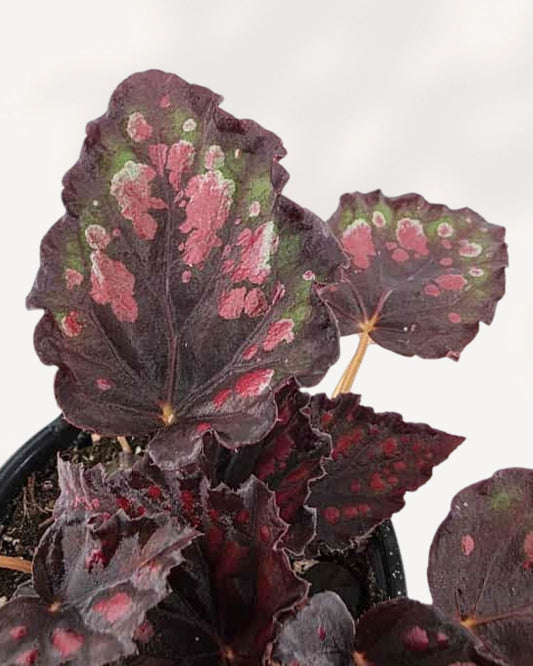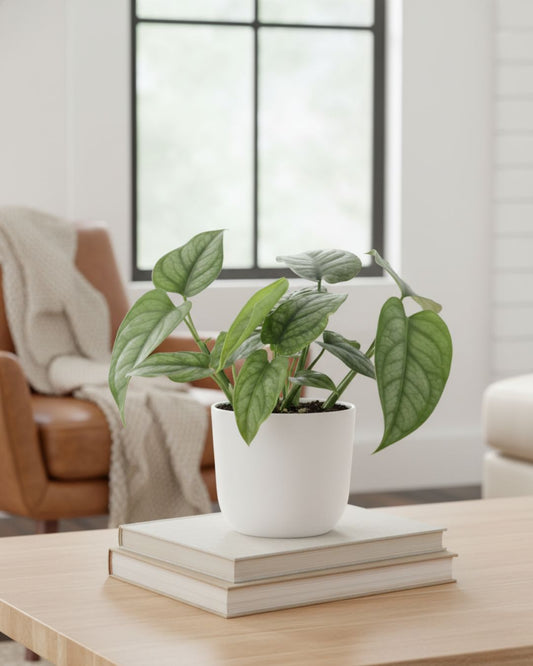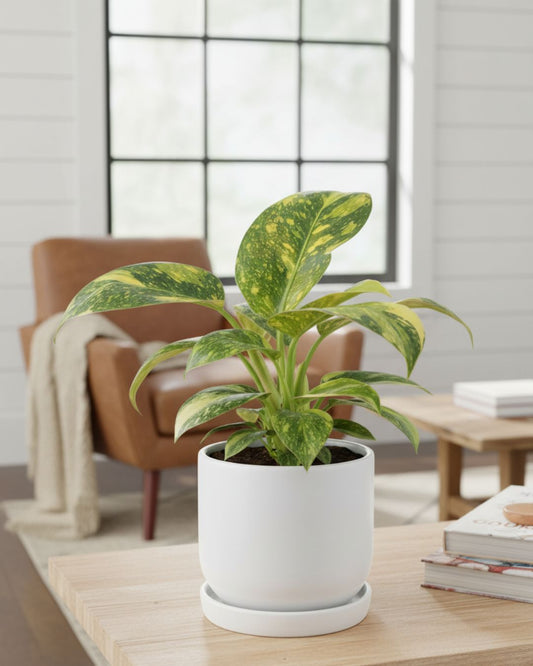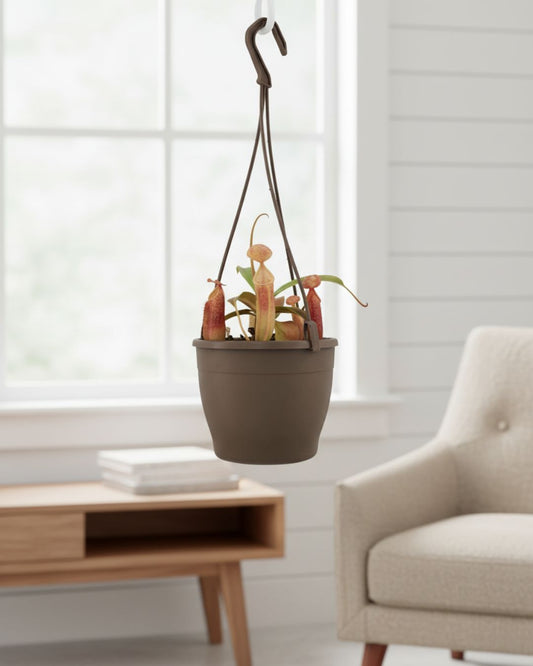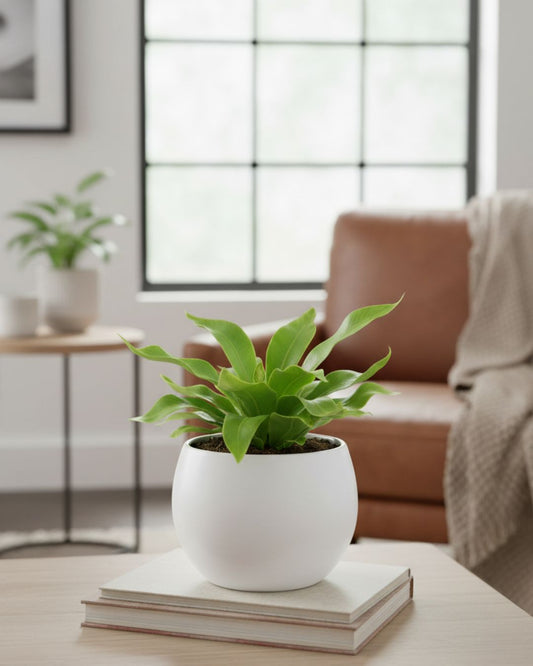How to Grow and Care for English Ivy

Have you ever observed a hanging houseplant with lush vines and charming heart-shaped leaves? That’s English ivy. It’s a popular and easy to grow plant with green leaves and yellow edges. According to a NASA study, Ivy helps purify the air in your house in addition to being beautiful to look at.
This article covers the fundamentals of growing and caring for ivy indoors. Let's begin!
Ivy Indoor Care at a Glance
Want a quick idea of how to care for your ivy? Have a look:
|
Care Area |
What Matters Most |
|
Light |
Bright, indirect light is ideal. |
|
Watering |
Let top ½ inch of soil dry out before watering. Ivy hates soggy soil. |
|
Drainage |
Use a pot with drainage holes. |
|
Humidity |
Tolerates dry air, but benefits from misting or a pebble tray in winter. |
|
Fertilizer |
Feed monthly during spring–fall. Skip in winter and during heatwaves. |
|
Pruning |
Prune to control shape and boost fullness, cut just above a leaf node. |
|
Climbing Habit |
Ivy may cling to surfaces. Use a trellis or frame to train growth safely. |
|
Common Issues |
Root rot (from overwatering) and spider mites (in dry air) |
English Ivy - Overview
Ivy originally comes from cooler outdoor areas, but is now an easy to keep plant inside the house. Some of the best placements for English Ivy are hanging from a shelf, trailing down a pot, or climbing up a wall.

Here are some types of ivy you can consider:
- English Ivy: Classic ivy with small pointed leaves that trails beautifully in any room.
- Irish Ivy: Grows faster than English Ivy and has a bit bigger leaves.
- Algerian Ivy: Bold leaves that thrive in warmer indoor spaces.
- Persian Ivy: Large leaves that add lush greenery to bigger rooms.
- Japanese Ivy: It has leaves that look like diamonds and gives rooms a new look.
Just being near ivy can help you feel less stressed and more peaceful. One study in Journal of Physiological Anthropology found that just touching or caring for indoor plants helped people feel more relaxed and lowered stress levels.
How to Keep Your Indoor Ivy Healthy
Following a care routine is a must for an ivy plant to make sure it doesn't get diseases, avoid yellowing, and thrive. Here's what you need to know:
Watering
Watering Ivy plants like moderate humidity, although they can also survive dry indoor air very well. You can put the pot on a tray of pebbles and water to give it a little extra moisture. Just make sure the pot doesn't sit in the water.
When it comes to giving water:
How do I best care for my English Ivy? I just got mine yesterday and I’ve never had one before!
byu/BoysenberryFair3092 inhouseplants
- Water the plant well till water comes out of the bottom.
- Before watering again, let the top half inch of soil dry off.
- Don't water too much. Ivy doesn't appreciate soil that is too wet.
- Don't allow the plant to sit in standing water, and use a pot and soil that drain properly.
- Ivy likes to be a little dry rather than excessively damp.
To understand whether tap or distilled water is better for your houseplants, read our full guide on choosing the right water for indoor plants.
Light Requirements
Not enough light can make ivy leggy (thin and stretched out) and more likely to get pests. Here’s what you can do for fulling the light requirement:
- Place your ivy in indirect sunlight.
- A little direct morning sun is fine and can even help it grow better.
- If you have a variegated ivy (with white or yellow patterns), it may lose some of that color if it doesn’t get enough light.
For more insights on how much light your indoor plants really need, check out our indoor light guide for houseplants.
Soil & Fertilizer
Ivy isn’t too picky when it comes to soil. It does best in rich, loose, loamy soil that keeps some moisture and drains well. Your ivy will be happy if you use a nice indoor potting mix.
- Use a fertilizer that dissolves in water and is formulated for leafy plants. It should include more nitrogen.
- In the spring, summer, and fall, while your ivy is growing, give it food once a month.
- Don't feed the plant during the hottest weeks of summer, since it may be stressed.
- Don't fertilize in the winter because this is ivy's dormancy time, and adding fertilizer then can hurt it.
Need help picking the right nutrients? Our indoor plant fertilizer buying guide covers the best options for healthy houseplant growth.
Pruning your Ivy
 Ivy grows quickly and can spread a lot if you leave it alone outside. There is less of it inside, but you should still trim it often to keep it neat or to help it keep its shape.
Ivy grows quickly and can spread a lot if you leave it alone outside. There is less of it inside, but you should still trim it often to keep it neat or to help it keep its shape.
Just cut the stems just above a leaf to control the size. This is something you can do at any time to keep the plant neat and growing. It's up to you how you want to shape your Ivy. Sponges can be bought at most yard stores and put inside a wire frame.
As the ivy grows, gently pin the plants to the frame to make fun shapes like hearts, circles, and spirals.
Discover a wide range of ivy plants at MyGreenscape, perfect for adding greenery to your home. Explore varieties like English Ivy and Algerian Ivy for easy care and vibrant, trailing beauty. Find the ideal ivy for your indoor space today! Explore Ivy Plants Collection.
When and How to Repot Your Ivy
Most ivy plants need to be repotted every 1 to 2 years, and the best time to do it is in early spring when the plant is about to start growing again.
Here are the signs that your plant needs repotting:
- Roots are growing out of the pot
- The soil dries out very fast
- The plant keeps falling over because it is too heavy at the top.
- The growth has stopped
How to repot your ivy:
- Pick a new pot that is about 2.5 cm (1 inch) wider than the old one.
- Use new potting soil made for indoor plants that drains well.
- Take the ivy out of its old pot and pull the roots apart a little.
- Put it in the new pot, fill it with fresh dirt, and give it lots of water.
- Move the plant back to a bright area that gets light from the side.
Tip: Don't use a big pot. Too much dirt can keep water the roots and kill.
How to Propagate Ivy
Ivy propagation is the process of making a new plant from a piece of an old one. It's very simple. Here’s how:
- Cut a stem that is 5 to 7 cm (3 to 4 inches) long and in good health.
- Remove the leaves from the cutting's base.
- Place the stem in a glass of water so that the part that doesn't have leaves is submerged.
- Simply put it somewhere bright, but not in the sun.
- Hold on for a few weeks. There will be roots growing from the stem's base.
- Instead of water, you can put the cutting right into moist potting soil. To help the roots grow, just make sure the dirt stays moist.
Note: You don't have to use a rooting hormone, but if you do, it can help the roots grow faster and stronger.
Common Problems With Ivy
Caring for ivy indoors is usually simple, but there are a few common problems you might run into. Here's how to spot them and what to do.
Root Rot
Root rot happens when the ivy sits in soggy soil for extended periods. We can say it’s the most common issue, and overwatering is the root cause.
To prevent this:
- Don’t overwater
- Use pots with drainage holes
- Use soil that drains well and doesn’t stay wet
If your ivy's leaves are turning yellow or the stems feel soft, it might be a sign of root rot. Let the soil dry out more between waterings and check that your pot drains properly.
Pests to Watch For
Indoor ivy is prone to pests that can make the plant weak and sticky. Here are some bugs your plant can catch:
- Mealybugs
- Spider mites
- Aphids
- Scale insects
- Whiteflies
How to Clean Ivy Leaves
The leaves of ivy often get dusty and bugged. Giving your plant a shower is an easy way to clean and refresh it:
- Just put the whole plant in the sink or bathroom
- For a few minutes, run warm water over the leaves
- In the beginning, this can help get rid of dust, bugs, and even some pests
- For a bigger bug problem, use neem oil spray or soap made for plants that kills bugs. Spray the plant all over, focusing on the areas under the leaves.
Bottom Line
One of the best things about growing ivy indoors is how easy it is to manage. While ivy can spread quickly and take over outdoors, inside it becomes a beautiful, well-behaved houseplant. With just a little care, ivy adds fresh green beauty to your home, without the worry of it growing out of control.
Frequently Asked Questions
How fast does ivy grow?
Ivy is a fast grower, especially when it has the right light, water, and care. You can expect ivy to grow several inches per month during the growing season (spring and summer). Growth will be slower in fall and winter when the plant is resting.
Is Ivy safe for pets?
No, Ivy is toxic to cats and dogs if eaten. It can cause stomach upset, drooling, or more serious problems.
Looking for alternatives? Here’s a list of pet-safe indoor plants.
Why are my ivy leaves turning yellow or brown?
Yellow leaves usually mean overwatering or poor drainage. Brown leaf edges often mean the air is too dry. Try adjusting your watering routine and mist the plant if your home has dry air.
Can I grow ivy in the bathroom?
Yes! Bathrooms are great for ivy because they usually have higher humidity. Just make sure there’s enough light.
The Positive Impact of Plants
-
Plants and Healing
Working with plants soothes the mind. It feels calming and healing, offering a peaceful break from daily life.
-
Plants for Recovery
Being around plants can speed up healing from sickness, making you feel better quicker in a natural way.
-
Plants and Work
Plants in your space may make your work better and faster, enhancing focus and creativity during tasks.
LETTING CUSTOMERS SPEAK FOR US!
Shop by Feature
FAQs for Plant Delivery in Ontario & Quebec
What types of house plants do you offer for delivery.
We offer a wide variety of houseplants for delivery. Here are some of the popular options: Aglaonema, Alocasia, Calathea, Hoya, Monstera, Palm, Peperomia, Philodendron, Pothos, Sansevieria Snake, Syngonium, Tradescantia.
What is the lifetime support?
All plants purchased from our store or through our workshops come with lifetime support. This means that whenever you have questions or concerns about your plant, we're here to help. Whether you're unsure about your plant's health or need advice, we can assist in identifying problems, answering your questions, and potentially saving your plant. Feel free to reach out to us on Instagram @mygreenscapeto or via email at support@mygreenscape.ca.
Where do Mygreenscape plants come from?
Our plants embark on a journey from various greenhouses across Canada. We prioritize short delivery routes to ensure your plant arrives happy, healthy, and full of vitality.
Do I have to repot my plants once they arrive?
Absolutely not! When your plant arrives, give it time to settle into its new home. Place it in the desired spot, and let it acclimate for about two weeks.
Favorite in our plant shop
-
Liquid Plant Fertilizer
Regular price From $30Regular priceUnit price per -
Plant Saucer
Regular price From $2Regular priceUnit price per -
Cymbidium Orchid
Regular price $89Regular priceUnit price per -
SUStee Soil Moisture Indicators
Regular price From $12Regular priceUnit price per -
Christmas Cactus
Regular price $12Regular priceUnit price per -
Ellwoodii Cypress
Regular price $18Regular priceUnit price per -
Philodendron 'McColley's Finale'
Regular price $15Regular priceUnit price per -
Begonia Rex 'Harmony Stained Glass'
Regular price $15Regular priceUnit price per -
Monstera Siltepecana
Regular price $15Regular priceUnit price per -
Philodendron Green Congo Nuclear
Regular price $45Regular priceUnit price per -
Nepenthes Sanguinea Pitcher Plant
Regular price $35Regular priceUnit price per -
Cobra Fern
Regular price $18Regular priceUnit price per
MyGreenScape is your go-to online shop for indoor plants in cities Ontario or Quebec, including Toronto, Montreal, and many more. Our mission is to add joy to your home, one leaf at a time. Explore our range of beautiful, air-cleaning plants from the comfort of your home. You can find beautiful indoor plants, pots for plants, garden tools, and hanging basket plants all in one spot. Our mission is to add joy to your home, one leaf at a time.
Buying plants online with us means no more carrying heavy pots or figuring out how to get big plants home. We deliver straight from the gardener to you, with eco-friendly packaging, across Ontario and Quebec. Expect your new green friends within 2-7 days.
Why choose MyGreenScape? Here’s why:
- Lifetime Support: We’re here for you always. Get all the help you need for your plants to flourish.
- 30-Day Happy Plant Guarantee: Not happy with your plant? Tell us within 30 days, and we’ll fix it.
- Easy Delivery: Fast, direct to your doorstep in Ontario or Quebec.
Hear from a happy customer, Sarah T.: "Buying plants was never easier. Quick, simple, and with great support from MyGreenscape."
Ready for easy, stress-free plant shopping? Visit us now and make your home greener. Join MyGreenScape for a hassle-free way to bring nature inside.



















